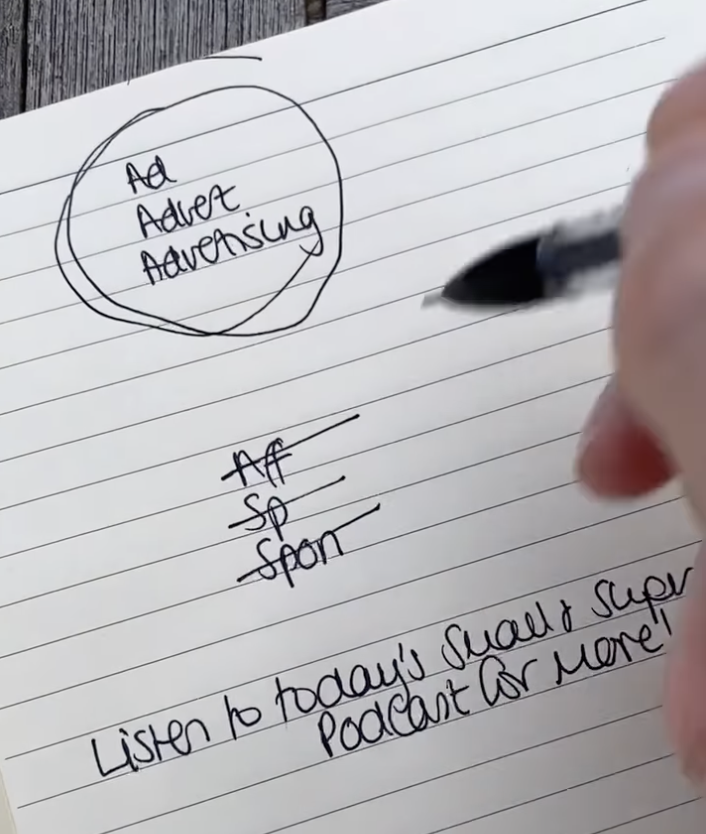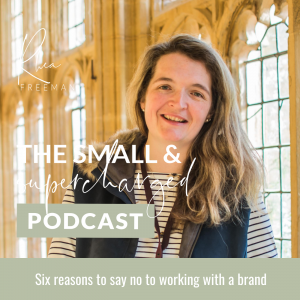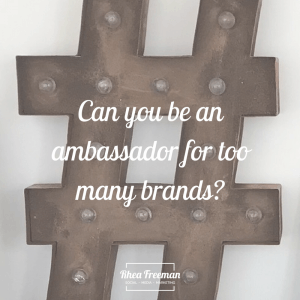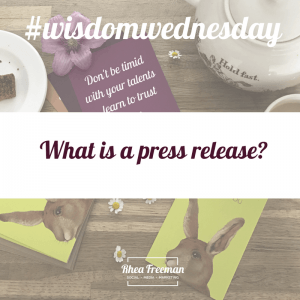
Oh, this is one of the most requested podcasts, so I am delighted to be able to bring you a podcast all about labelling your sponsored/gifted/affiliate linked content. This is a MUST listen for anyone who is or would like to be an influencer. It’s really important…
#ad #spon #aff … let’s talk labels and influencer marketing
This is a subject that is a constant point of annoyance for me, which makes being able to share more about it so important. Be clear- I know that everyone makes mistakes and everyone needs to learn- but when I see repeat ‘offenders’ who really should know better at the same time as seeing others really scared to do the wrong thing, well, it just doesn’t sit well me me at all. So hopefully, this podcast- the information within it and the addition resources available mentioned- should really help those who want to do the right thing.
I do understand that it can be really confusing, but I always refer people to the guide available on the ASA’s (Advertising Standards Authority) website that helps talk people through it all. So I reached out to the people over at the ASA and I’m really thrilled to say that they have listened to this podcast and have said they’re happy with the content. Why did I do this? Because it’s so important to me that everything is as accurate as it can be. I want you to listen, learn, check out all the free resources and no longer be confused about what to label your content (when you need to, of course).
This is a podcast for influencers- yes- but it’s a podcast for anyone who has ambitions to be an influencer, who receives free products or payments (but maybe doesn’t see themselves as an influencer), and also brands. Yes, brands, I’m talking to you. It’s really important you know how this works too.
We need to be doing a better job of labelling content correctly. I see so, so many examples of incorrect and misleading ads. We need to do better. And this podcast should help.
Some key points to remember about labels and influencer marketing
- If you want your audience to trust you, label things correctly. People need to know when they’re being sold to.
- There is a code that relates to influencer marketing. Get familiar with it but don’t fear it.
- It’s against the law if an ad isn’t clearly identifiable.
- Don’t promote something as unbiased and generic when you’ve been incentivised to do it. This could be because you’ve been paid to say it or even if the product has been gifted.
- ‘Payment’ isn’t just money. Payment is also the loan of a product, a free trip, or a gifted item.
- Any payment needs to be disclosed. Affiliate links also fall into this category.
- Ads must be really easy to understand and clear. This means putting your ad label upfront- on social, the front of your caption. The first word.
- You don’t have to use the word ‘ad’, but there’s more information in this guide about what words can be used, and some that you might want to avoid.
- If the label isn’t easy to understand for a normal person, that’s not a good one to use.
- If the label is hidden at the end of the caption, that’s not advised as it’s not clear.
- You can get help if you’re stuck- check the guidelines PDF here, but you can also find info relating to the copy advice line and more.
- Make it clear. Always. If you take nothing away from this podcast or blog, please let that be to make it clear. Read the guidelines here.
And remember, when we, as consumers, see people labelling ads as ads, can we support them? If it’s something that creator is passionate about, shouldn’t we be supporting them anyway? Don’t not react or engage because something is an ad!






